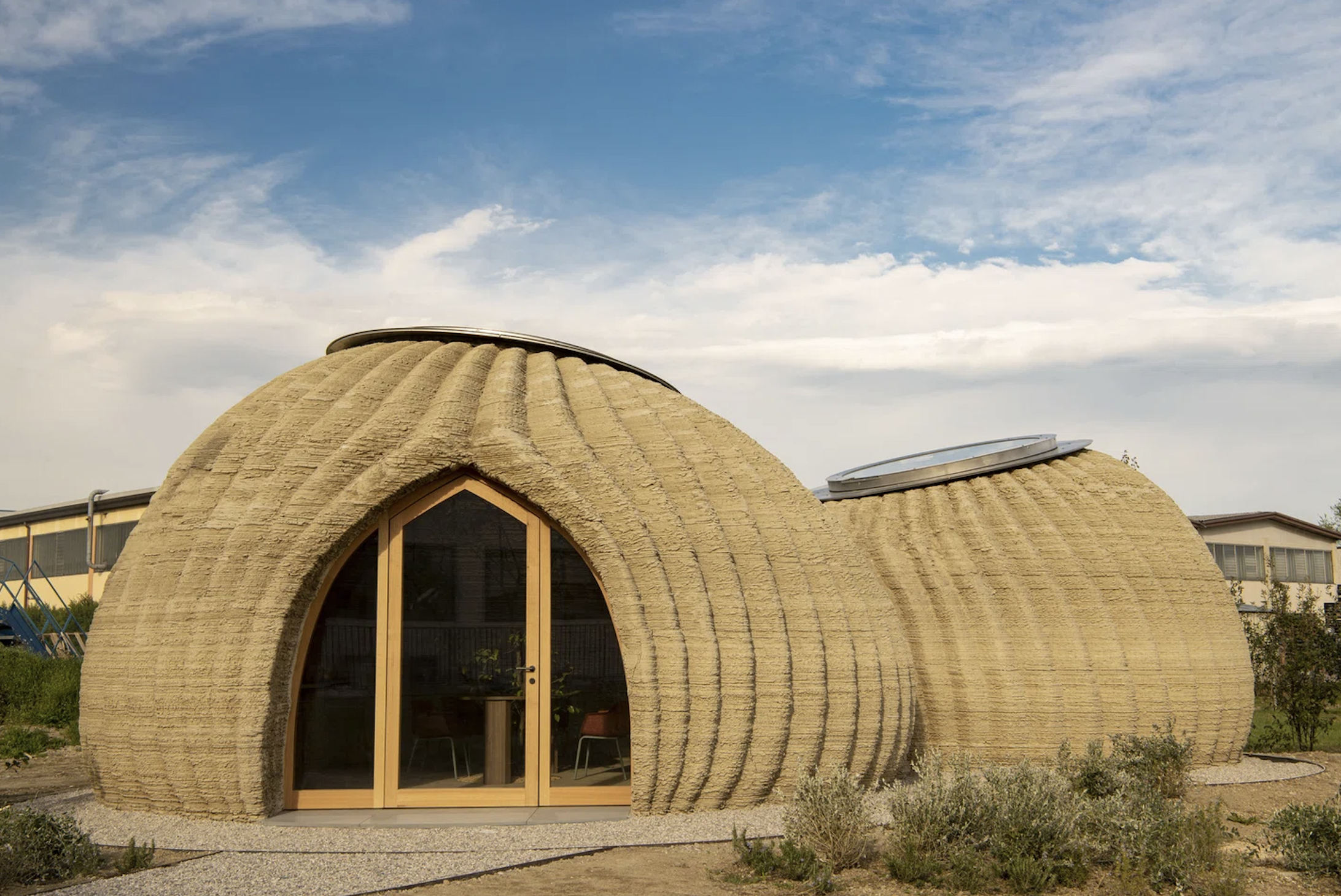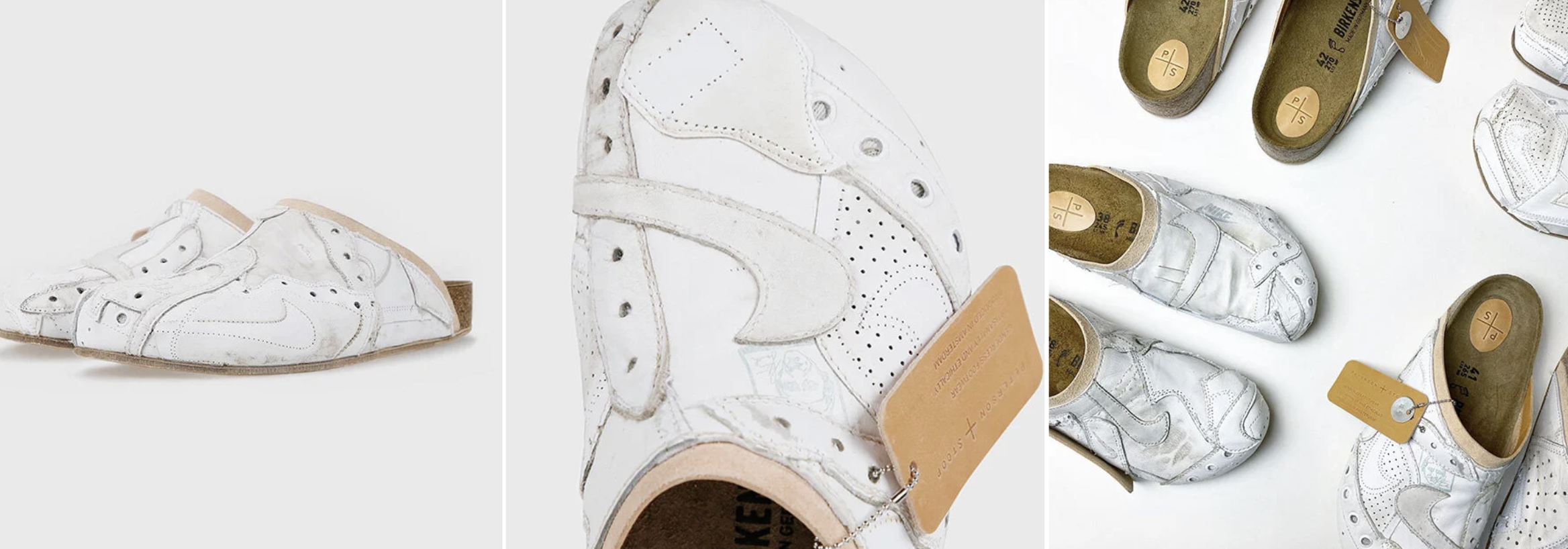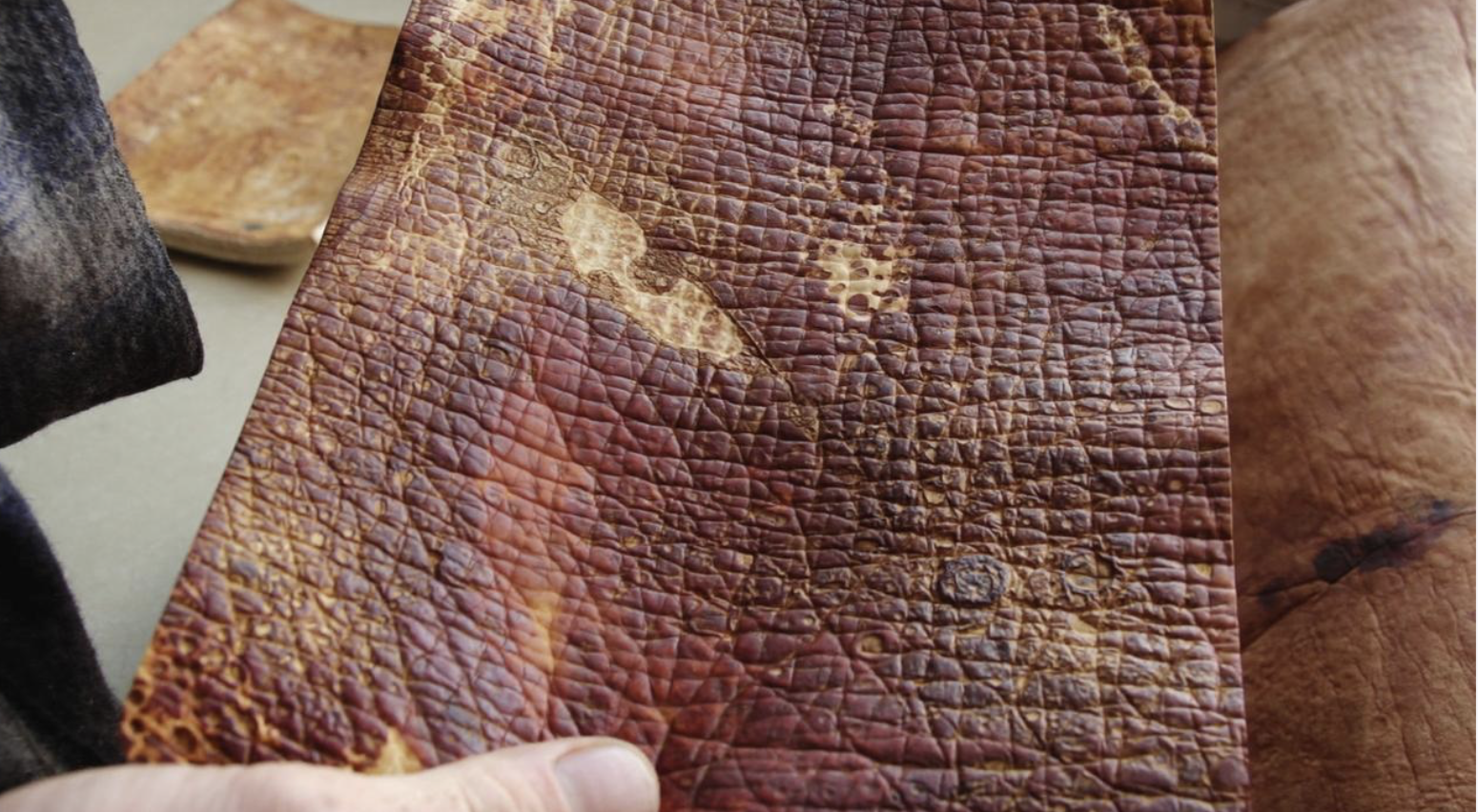TOOxTOO
Issue #090
Megan Hotson
09/12/21

Welcome to your weekly dose of TooXToo, this week featuring the Pollinator Park, a 3D house made from mud, Peterson Stoop’s sneaker revival, and mushroom leather…
The Pollinator Park
Pollinator Park is a VR experience set in 2050 that explores a future without bees and other insects that previously had a positive impact on the environment. This thought-provoking project was curated by the EU Pollinators Initiative in collaboration with ‘archibiotect’ Vincent Callebaut.

Europe 2050 is painted as a chaotic dystopian world where healthy eco-systems are absent through this virtual lens. The experience allows users to shop for groceries in a pollinator-deprived world, which the developers of the park hope will convey the disastrous impact of insect decline.
We do not want to be asking one another in 2050 whether we remember a time when the sky was filled with birds and bees… and pollinator park could be an avenue through which people can rediscover the beauty of nature, and act to protect our pollinators before it’s too late.
Pollinator Park is an example of a purpose-built dystopia, contrasting with the trend surrounding curated utopias in the metaverse at present. Hopefully actions like this by brands can facilitate people to change learned behaviours that have a negative impact on the planet.
A 3D house made from mud
In Massa Lombarda, a small town near Ravenna in Northern Italy- a 3D house has been constructed… out of mud: the first ever 3D-printed house, made solely from mud. It is part of a project called TECLA and aims to appreciate the full potential of 3D-printing in the construction industry.

Unfortunately, 3D printing has only been used for a handful of projects in the construction space due to the expense of the materials required for the printers. However, TECLA is combatting this expense by using raw earth to print. This means these printers could in retrospect be shipped to a remote area to print houses and other structures, without needing any other (expensive) additional materials.
Peterson Stoop’s sneaker revival
A sustainable approach to the production of footwear… enter: Peterson Stoop- an Amsterdam-based brand that wants to revive people’s old sneakers to give them a second life.

Peterson stoop want to stop people replacing their discarded sneakers with brand new shoes, and instead encourage consumers to buy their second-hand, revived footwear. To create the shoes, the small team of artisans in Amsterdam deconstruct old sneakers and rebuild them using all natural materials.
They make a range of different styles of shoe from discarded sneakers; their latest project is the PS SYNERGY MULE, a shoe that meshes the Birkenstock sandal with NIKE AF1’s and adidas stan smith toppers. The mule has a unique appearance and is set to be donned by the trend-setters of Amsterdam’s sneaker world.
The line of shoes is limited to 100 items, and will all be sent with handwritten cards, and recycled packaging. Each mule is one of a kind, and are available now to pre-order with a hefty ol’ price tag of 580 euros…
Mushroom Leather
The textiles industry is continually innovating, responding to the growing demands of more ethical and eco-conscious consumers. One of the latest innovations is mushroom leather. This leather, which hopes to save animals, is grown from fungi that can be engineered to look as well as feel like calfskin.
The fine Mycelium forming the leather is grown in trays, which takes a small amount of time. These trays can be tailored to fit a designer’s exact specifications, as a result removing any waste from excess scraps. Once grown, the material is then harvested, tanned, and finished to give the appearance of an animal-like leather.

This mycelium material has most recently been crafted into a handbag by infamous fashion house Hermès. Its fashion debut is leading the way, as mushroom leather is set to spearhead efforts in sustainability in the world of fashion and textiles.
The current issue with this wonderous leather, is that it is a rather exclusive alternative to animal leather. If this mushroom-based material is not made accessible to more people at a more realistic price point, it’s impact will be significantly hindered.


